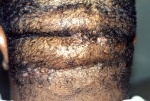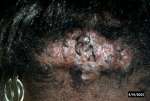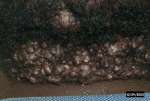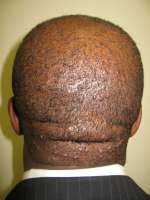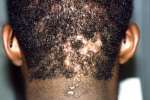|
Find Out How to Give Your Hair the Nutrition It Needs With Grow Longer Thicker Hair; Enhanced Faster Hair Growth WEB SPECIALS Click anywhere in this box to learn more Acne Keloidalis Nuchae
If you are having pus bumps, with infection and irritation along the back of your neck at the margins of the hair line, you are most likely affected by Acne Keloidalis Nuchae, also known as Keloidal Folliculitis or Nuchal Keloidal Acne, which is often diagnosed by Dr. Weaver. Though Acne Keloidalis Nuchae (AKN) is not related to common acne, it is asspcoated with pus bumps that resemble acne. However, in AKN, the pustules are due to a bacterial infection of the hair follicles which are unrelated to the organism that causes facial acne. The condition can be mild, moderate, or severe leading to large areas of hair loss or keloids if not treated early and effectively. Acne Keloidalis Nuchae mostly appears at the juncture which connects the back of the neck and the scalp. You will find it most commonly in African American men, especially those who cut their hair short or bald, but other ethnic groups as well as women can get it too. Again, in extreme cases, these bumps can lead to scar tissue or keloids, and hair can be lost on a permanent basis in the affected areas. More Photos of Acne Keloidalis Nuchae
Find Out How to Give Your Hair the Nutrition It Needs With Grow Longer Thicker Hair; Enhanced Faster Hair Growth WEB SPECIALS Click anywhere in this box to learn more Back to Top of Acne Keloidalis Nuchae Page
|







